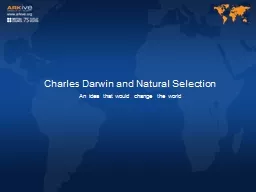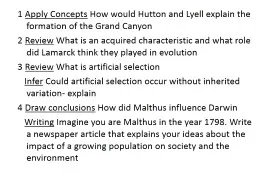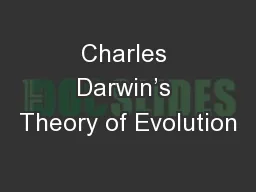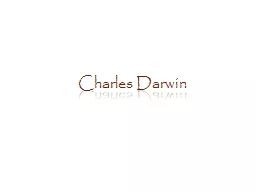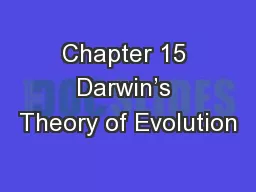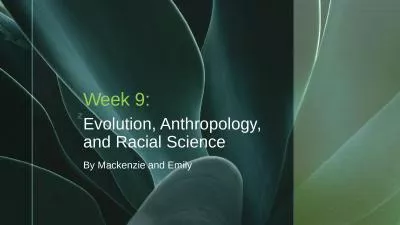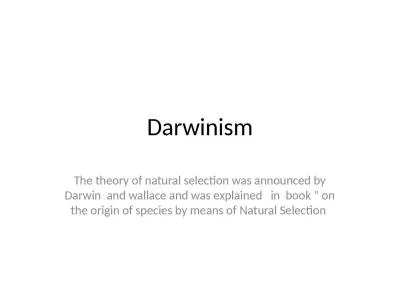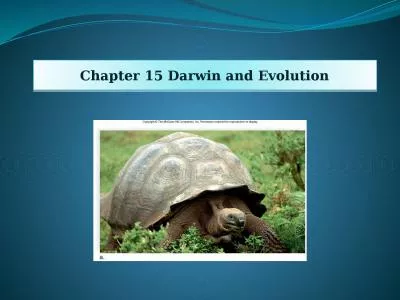PPT-Charles Darwin and Natural Selection
Author : pamella-moone | Published Date : 2017-10-29
An idea that would change the world Charles Darwin developed his theory of evolution by natural selection using four important observations which led him to two
Presentation Embed Code
Download Presentation
Download Presentation The PPT/PDF document "Charles Darwin and Natural Selection" is the property of its rightful owner. Permission is granted to download and print the materials on this website for personal, non-commercial use only, and to display it on your personal computer provided you do not modify the materials and that you retain all copyright notices contained in the materials. By downloading content from our website, you accept the terms of this agreement.
Charles Darwin and Natural Selection: Transcript
Download Rules Of Document
"Charles Darwin and Natural Selection"The content belongs to its owner. You may download and print it for personal use, without modification, and keep all copyright notices. By downloading, you agree to these terms.
Related Documents

